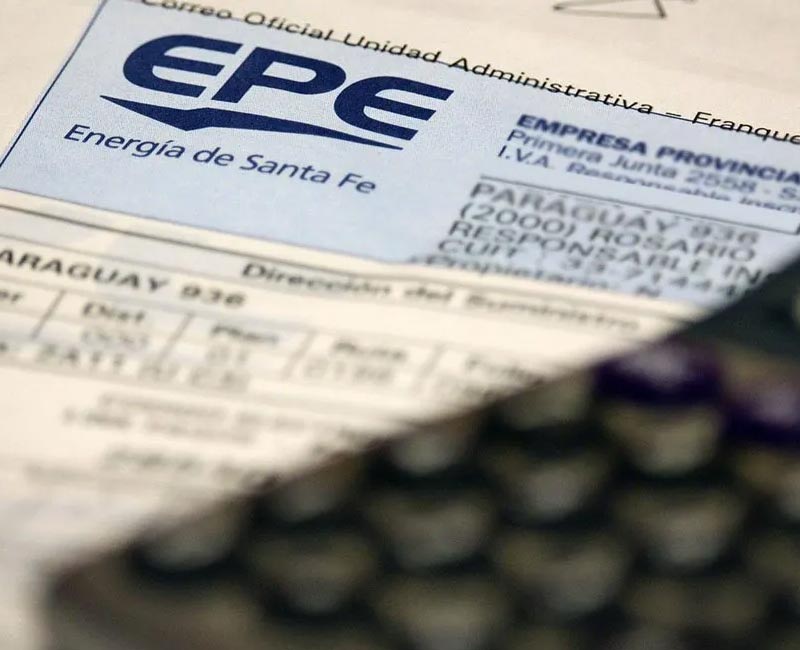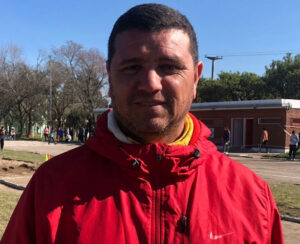
Será a partir del marzo y el impacto pleno se verá reflejado en las facturas del bimestre mayo-junio. Se incluye una clausula con la posibilidad de volver a actualizar luego de 180 días si existiera variación en la estructura de costos con un tope del 20%. Se suma al 12% que determinó Nación en febrero.
El Gobierno de Santa Fe, a través del Ministerio de Infraestructura, Servicios Públicos y Hábitat, autorizó el aumento en la tarifa de la Empresa Provincial de la Energía (EPE) en un 34.8% promedio a partir de los consumos de marzo. El impacto pleno se verá reflejado en las boletas de mayo -junio. Destacan que está por debajo de la inflación y representa el número que desde la Empresa habían establecido en el marco de la Audiencia Pública que se realizó a mediados de febrero.
“Hemos planteado un incremento tarifario de 34,8% promedio, sosteniendo lo que fue una premisa de trabajo durante la gestión. Siempre pensamos que la tarifa tiene que ser una decisión política que lea la situación socioeconómica de la provincia y del país”, sostuvo Mauricio Caussi, titular del directorio de la EPE, en diálogo con medios de Santa Fe.
Desde la cartera que conduce Silvina Frana consideraron pertinente la solicitud, por cuanto los incrementos planteados para el año 2023 sobre las pequeñas demandas en sus tres niveles de segmentación, comercial e industriales, no superan la pauta de inflación proyectada.
Como se resolvió el año pasado, la EPE propone para este período la incorporación de un indicador ponderado que permita evaluar, a partir de los 180 días de aplicado la actualización, la valuación de índices INDEC representativos de materiales, mano de obra y servicios, que conforman la estructura de costos para la prestación del servicio, pudiendo solicitar su aplicación, con un tope máximo del 20 %.
El titular de la empresa aseguró que el incremento solicitado permitirá que el costo de la tarifa se sostenga por debajo de los incrementos salariales, cuidar los bolsillos de los santafesinos, mantener la competitividad de la empresa y su inversión.
El impacto en las tarifas será diferente dependiendo del segmento que integren los clientes. “Una familia tipo con consumo racional de 400 kw bimestrales le implicará 3000 pesos más por mes”, explicó el funcionario. De esta manera el costo diario de energía que pagará el cliente será 400 pesos diarios, un precio que el entrevistado calificó como racional en relación con otros bienes de consumo.
Nación determinó aumentos en febrero
A comienzos de febrero la Secretaría de Energía del Ministerio de Economía, confirmó un nuevo precio estacional de energía en el Mercado Eléctrico Mayorista el cual se aplicará a partir de los consumos del 1 de febrero. Los valores se dan en el marco de la reprogramación trimestral, para el período comprendido entre el 1 de febrero y el 30 de abril. Esto implica una suba de la tarifa para los usuarios de Santa Fe del 12% en promedio, aunque no afectará a todos de la misma forma, ya que hay usuarios inscriptos en el subsidio nacional.
The province authorized an increase of 34.8% to EPE
It will be effective as from March and the full impact will be reflected in the invoices for the two-month period May-June. It includes a clause with the possibility of updating again after 180 days if there is a variation in the cost structure with a ceiling of 20%. This is in addition to the 12% determined by the Nation in February.
The Government of Santa Fe, through the Ministry of Infrastructure, Public Services and Habitat, authorized the increase in the tariff of the Empresa Provincial de la Energía (EPE) by an average of 34.8% as from March consumption. The full impact will be reflected in the May-June bills. They emphasize that it is below inflation and represents the number that the Company had established in the framework of the Public Hearing held in mid-February.
“We have proposed a tariff increase of 34.8% on average, maintaining what was a working premise during the management. We always think that the tariff has to be a political decision that reads the socioeconomic situation of the province and the country”, said Mauricio Caussi, head of the EPE’s board of directors, in an interview with the Santa Fe media.
From the portfolio led by Silvina Frana, the request was considered pertinent, since the increases proposed for the year 2023 on small demands in its three segmentation levels, commercial and industrial, do not exceed the projected inflation guideline.
As it was resolved last year, EPE proposes for this period the incorporation of a weighted indicator to evaluate, from 180 days after the update is applied, the valuation of INDEC indexes representative of materials, labor and services, which make up the cost structure for the rendering of the service, being able to request its application, with a maximum limit of 20%.
The owner of the company assured that the requested increase will allow the cost of the tariff to remain below the salary increases, to take care of the pockets of the people of Santa Fe, to maintain the competitiveness of the company and its investment.
The impact on tariffs will be different depending on the segment of customers. “A typical family with a rational consumption of 400 kw bimonthly will have to pay 3,000 pesos more per month”, explained the official. In this way, the daily cost of energy that the customer will pay will be 400 pesos per day, a price that the interviewee described as rational in relation to other consumer goods.
Nation determined increases in February
At the beginning of February the Energy Secretariat of the Ministry of Economy confirmed a new seasonal price of energy in the Wholesale Electricity Market which will be applied as from February 1. The values are part of the quarterly reprogramming for the period from February 1 to April 30. This implies a rate increase for Santa Fe users of 12% on average, although it will not affect all of them in the same way, since there are users enrolled in the national subsidy.











Noticias relacionadas
Condenaron a 20 años de prisión a un hombre que abusó sexualmente de tres niñas en Margarita
Peralta contra el Colegio de Abogados: “Son manejados por el Comité de la UCR”
Municipales llegaron a un acuerdo salarial y no habrá paro la semana próxima